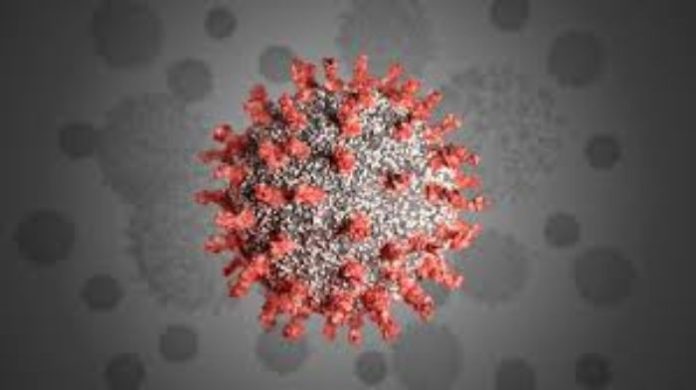As the ripple of COVID-19 careens around the globe, it’s forcing humankind to innovate and change the way we work and live. The upside of where we find ourselves right now is that individuals and corporations will be more resilient in a post-COVID-19 world.
Here are nine predictions of what our world may look like once we have left the pandemic behind.
1. More Contactless Interfaces and Interactions
There was a time not too long ago when we were impressed by touch screens and all they enabled us to do. COVID-19 has made most of us hyper-aware of every touchable surface that could transmit the disease, so in a post-COVID-19 world, it’s expected that we’ll have fewer touch screens and more voice interfaces and machine vision interfaces. Prior to the pandemic, we saw the rollout of contactless payment options through mobile devices.
However, with the increase in people wanting to limit what they touch, an option to pay for goods and services that does not require any physical contact is likely to gain traction. Machine vision interfaces are already used today to apply social media filters and to offer autonomous checkout at some stores. Expect there to be an expansion of voice and machine vision interfaces that recognize faces and gestures throughout several industries to limit the amount of physical contact.
2. Strengthened Digital Infrastructure
COVID-19 caused people to adapt to working from home and in isolation. By forcing our collective hand to find digital solutions to keep meetings, lessons, workouts, and more going when sheltering in our homes, it allowed many of us to see the possibilities for continuing some of these practices in a post-COVID-19 world. For me, I realized that traveling to other countries just for a meeting isn’t always essential, and I have learned that video calls for all kinds of meetings (yes, even board meetings) can be equally effective. My daughter had her first piano lesson over a video call thanks to our social distancing requirements, and it went surprisingly well.
3. Better Monitoring Using IoT and Big Data
We see the power of data in a pandemic in real-time. The lessons we are receiving from this experience will inform how we monitor future pandemics by using the internet of things technology and big data. National or global apps could result in better early warning systems because they could report and track who is showing symptoms of an outbreak. GPS data could then be used to track where exposed people have been and who they have interacted with to show contagion. Any of these efforts require careful implementation to safeguard an individual’s privacy and to prevent the abuse of the data but offer huge benefits to more effectively monitor and tackle future pandemics.
4. AI-Enabled Drug Development
The faster we can create and deploy an effective and safe drug to treat and a vaccine to prevent COVID-19 and future viruses, the faster it will be contained. Artificial intelligence is an ideal partner in drug development because it can accelerate and complement human endeavors. Our current reality will inform future efforts to deploy AI in drug development.
5. Telemedicine
Have you received the emails from your healthcare professionals that they are open for telemedicine or virtual consultations? To curb traffic at hospitals and other healthcare practitioners’ offices, many are implementing or reminding their patients that consultations can be done through video. Rather than rush to the doctor or healthcare center, remote care enables clinical services without an in-person visit. Some healthcare providers had dabbled in this before COVID-19, but the interest has increased now that social distancing is mandated in many areas.
6. More Online Shopping
Although there were many businesses that felt they had already cracked the online shopping code, COVID-19 taxed the systems like never before as the majority of shopping moved online. Businesses who didn’t have an online option faced financial ruin, and those who had some capabilities tried to ramp up offerings. After COVID-19, businesses that want to remain competitive will figure out ways to have online services even if they maintain a brick-and-mortar location, and there will be enhancements to the logistics and delivery systems to accommodate surges in demand whether that’s from shopper preference or a future pandemic.
7. Increased Reliance on Robots
Robots aren’t susceptible to viruses. Whether they are used to deliver groceries or to take vitals in a healthcare system or to keep a factory running, companies realize how robots could support us today and play an important role in a post-COVID-19 world or during a future pandemic.
8. More Digital Events
Organizers and participants of in-person events that were forced to switch to digital realize there are pros and cons of both. For example, I regularly take part in technology debates in the Houses of Parliament in London. This week’s debate about ‘AI in education’ was done as a virtual event and went very well and actually had more people attend. We didn’t experience a capacity issue as we do with an in-person event, plus there were attendees logged on from all around the world. While I don’t predict that in-person events will be replaced entirely after COVID-19, I do believe event organizers will figure out ways the digital aspects can complement in-person events. I predict a steep rise in hybrid events where parts of the event take place in person, and others are delivered digitally.
9. Rise in Esports
Sporting events, organizations, and fans have had to deal with the reality of their favorite past-times being put on hold or seasons entirely canceled due to COVID-19. But esports are thriving. There are even e-versions of F1 car racing on television, and although it might not be the same as traditional Formula 1 racing, it’s giving people a “sports” outlet. Unlike mainstream sporting events, e-sporting events can easily transition online. Similarly to events, I predict more hybrid sports coverage where physical events are complemented with digital offerings.
COVID-19 might be taxing our systems and patience, but it’s also building our resilience and allowing us to develop new and innovative solutions out of necessity. In a post-COVID-19 world, I predict we will take the lessons handed to us by our time dealing with the virus and make our world a better place. What do you see in the future?
Source: TheBBCghana.Com


















